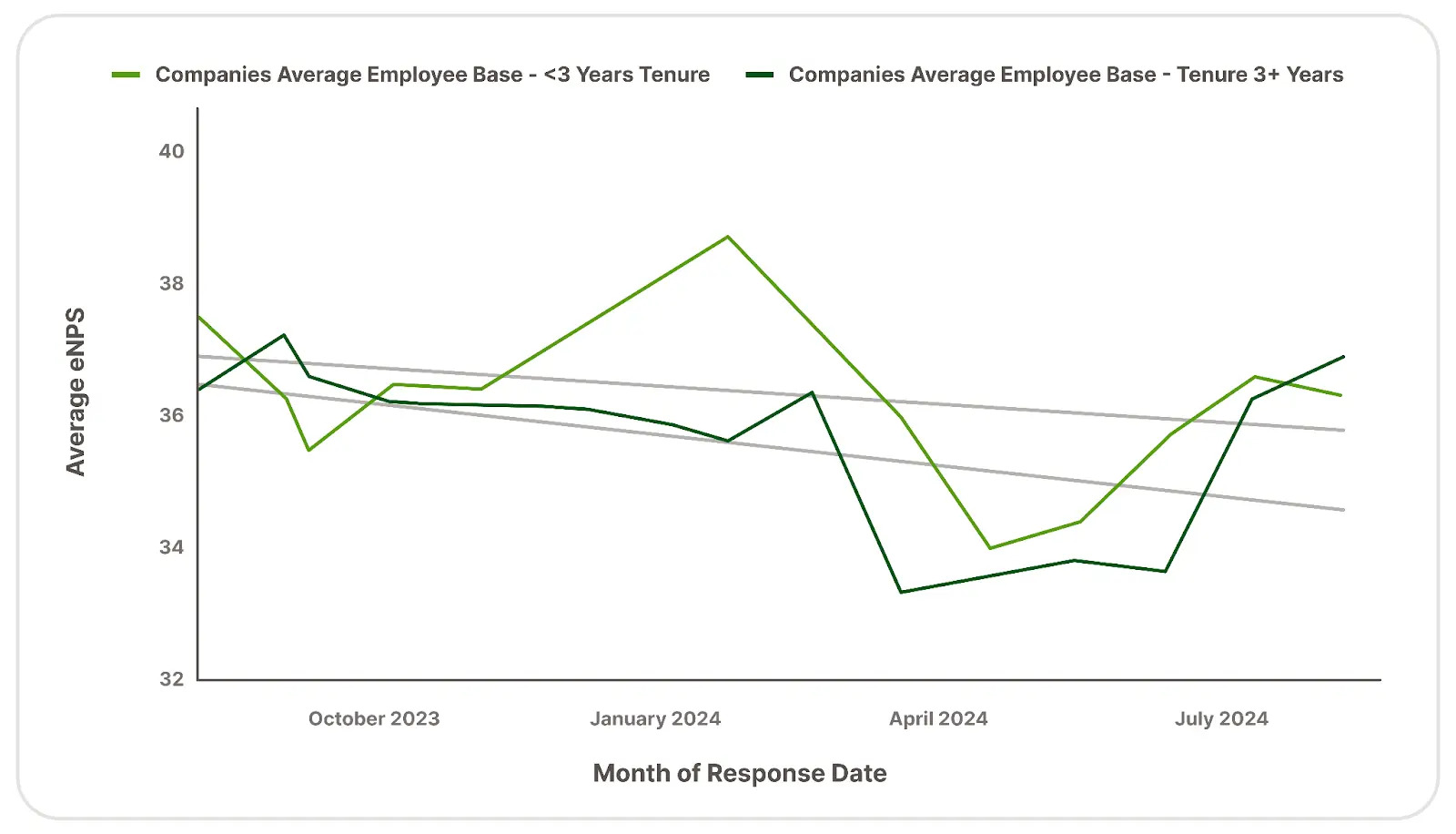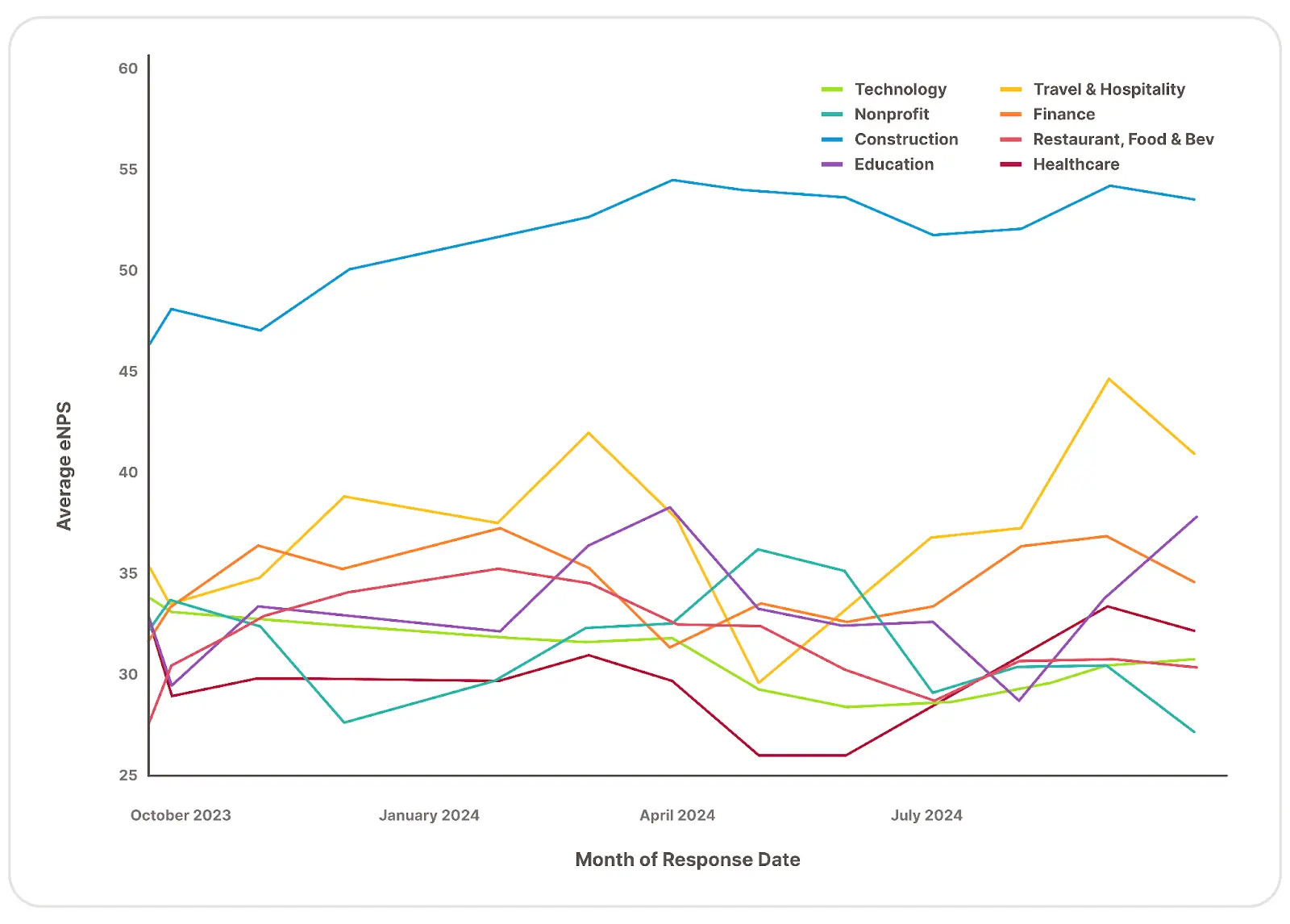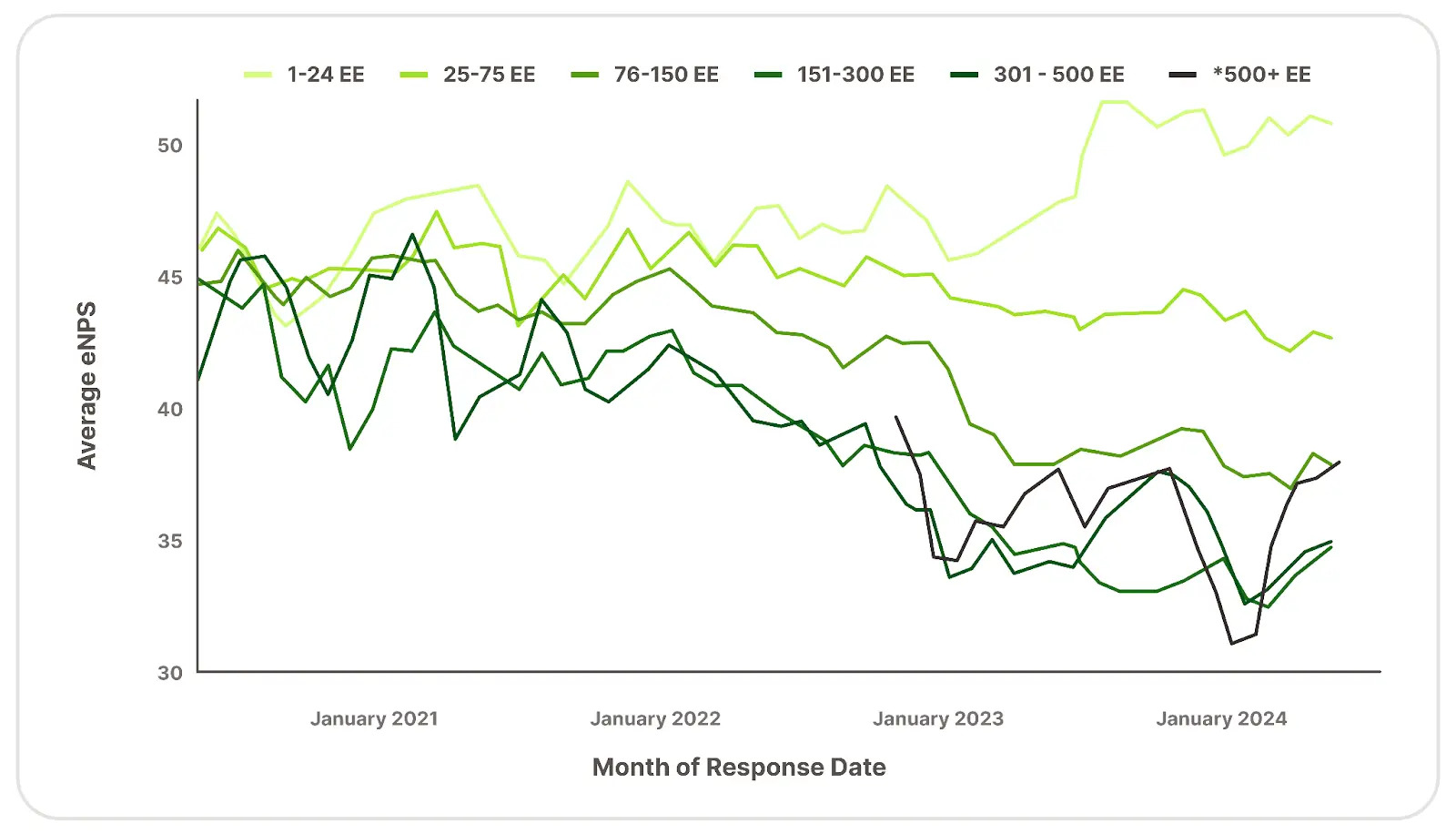
Which sectors are seeing gains in employee satisfaction worldwide?

After a significant drop in employee happiness in Q2 2024, recent data from BambooHR shows an encouraging recovery in Q3, reversing a three-year pattern of decline during this period.
The Employee Net Promoter Score (eNPS)—a measure of employee satisfaction based on likelihood to recommend the company as a workplace—rose to 36, up from 35 in Q2, reflecting heightened morale across industries.
This marks the first Q3 eNPS increase in recent years and hints at potential year-end positivity if the upward trend holds into Q4, a period that typically sees boosts in employee happiness.
“Employee happiness is more than just a metric—it’s a reflection of the culture and values that organizations cultivate every day,” says Anita Grantham, Head of HR at BambooHR.
“By focusing on meaningful engagement and genuine connection, companies can create workplaces where people feel valued and inspired to do their best work.”
Analysis of data from over 60,900 employees finds a rise in eNPS among organizations with long-tenured employees, revealing that employees with more than three years at a company reported a 1% higher satisfaction rate than newer hires, an inversion of trends seen earlier this year.

“While 1% isn’t much, this marks only the second time since 2020 that more tenured employees have expressed greater happiness. The first time was Q3 2023,” says BambooHR in its report.
“This shift underscores the value of investing in long-term employee engagement strategies. As employees settle into their roles and build deeper connections with their teams, they may find more fulfillment and purpose in their work. This trend also highlights the importance of recognizing and rewarding the contributions of seasoned employees, who bring invaluable institutional knowledge and stability to their organizations.”
In addition, industry-specific data show the following trends:

Having close relationships with other people has emerged as a top pillar for employee happiness, according to a separate survey.
Larger companies—those with 500 or more employees—saw the most significant increase in employee satisfaction in Q3, with a 20% boost from Q2, whereas smaller firms (1-24 employees) continued to lead with the highest average eNPS score, found BambooHR.
However, mid-sized companies (151-500 employees) recorded slightly lower scores, underscoring the unique challenges this segment faces in maintaining engagement as they scale.

“In the ever-evolving landscape of business, it’s heartening to see that larger organizations, particularly those with over 500 employees, are experiencing a small boost in employee satisfaction,” Grantham notes.
“This trend underscores the importance of fostering a supportive and engaging work environment, regardless of company size.”
For HR professionals looking to sustain or improve employee satisfaction in Q4 and beyond, BambooHR’s report suggests several actionable insights: